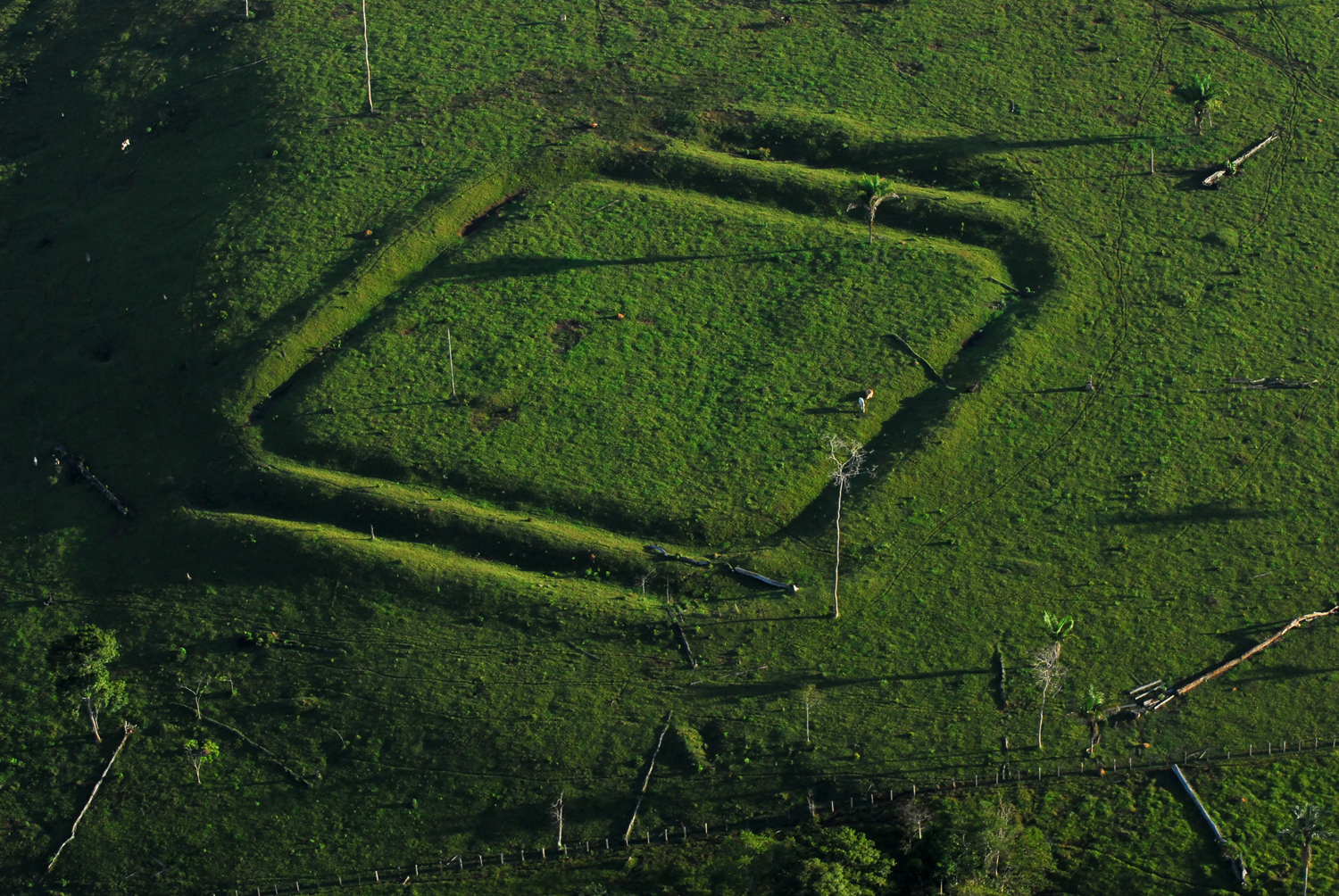Mysterious Amazonian Geoglyphs Were Built in Already-Altered Forests

Enormous geometrical earthworks found in the Amazon rainforest were built after humans had already begun altering the forest ecology, but the purpose of these huge ditches remains mysterious, according to new research.
The geoglyphs — trenches as big as 36 feet (11 meters) wide and 13 feet (4 m) deep — were dug at various times between the first and 15th centuries. The geoglyphs were discovered in the 1980s, when deforestation for cattle ranching and other agricultural purposes exposed the earthworks, said Jenny Watling, an archaeologist at the University of São Paulo in Brazil, who led the research while she was a doctoral candidate at the University of Exeter in the United Kingdom. The question, Watling told Live Science, was how the landscape looked when the geoglyphs were built.
"There's been a very big debate circling for decades now about how pristine or man-made the Amazonian forests are," Watling said. The new study suggests that humans have been altering these forests for about 4,000 years. [See Aerial Photos of the Amazon Earthworks]
An altered Amazon
Watling and her colleagues dug soil samples from holes 5 feet (1.5 m) deep at two geoglyph sites, called Jaco Sá and Fazenda Colorada, in the state of Acre in far western Brazil. They analyzed these soils for charcoal, which indicates burning activity, as well as for stable carbon isotopes, molecular variations of carbon that can reveal whether the plants that used to grow there were grassland or forest species. Finally, the researchers examined the samples for phytoliths, microscopic plant remains that can help scientists identify specific ancient species.
The researchers found that the forest has been bamboo-dominated for at least 6,000 years, indicating a certain level of resiliency to climate change and human activity. Whereas the rainforest in nearby Bolivia converted to savanna about 6,000 years ago during a dry period in the climate, the forest in Acre state stayed strong, Watling said.
The analyses showed that charcoal layers appeared about 4,000 years ago, around the same time that archaeological evidence shows that humans moved into the region, the researchers report today (Feb. 6) in the journal Proceedings of the National Academy of Sciences.
The charcoal indicates fires, most likely human-set, that would have been used to clear the forest. After humans started altering the landscape, palm trees became more common in the forest, the analysis showed.
Sign up for the Live Science daily newsletter now
Get the world’s most fascinating discoveries delivered straight to your inbox.
People likely encouraged palms to grow because they provided both food and building material, Watling said. Palms are some of the first trees to come back after the forest is cleared, the researchers wrote, though they're eventually outcompeted by larger, slower-growing trees. Because palms remained plentiful for around 3,000 years, humans were likely altering this cycle, preventing newer trees from overtaking the useful palms. After the geoglyphs were abandoned about 650 years ago, palms became less common again, the researchers said.
Geoglyph mysteries
With human activities beginning about 4,000 years ago, the 2,000-year-old geoglyphs were relative newcomers to the archaeological scene, the researchers found.
"The geoglyphs were actually built within forest that had already been altered," Watling said. "People were already there, changing the composition of the forest."
Maize and squash were grown near the earthworks, Watling found in earlier research, but archaeologists have not seen evidence of villages, or even persistent dwellings, there. However, there are signs that rituals were conducted there, Watling said, namely smashed, decorated pots found near the entrances to some geoglyphs. People might have come to the geoglyph sites sporadically, perhaps during harvest seasons, to gather food from the "prehistoric supermarket," Watling said.
"There's loads of them," she said. "And we don't really know why."
Geoglyphs are found all over the world; famous examples include the Nazca Lines in Peru, dozens of geometric shapes in Kazakhstan and wagon-wheel designs in Jordan.
Original article on Live Science.

Stephanie Pappas is a contributing writer for Live Science, covering topics ranging from geoscience to archaeology to the human brain and behavior. She was previously a senior writer for Live Science but is now a freelancer based in Denver, Colorado, and regularly contributes to Scientific American and The Monitor, the monthly magazine of the American Psychological Association. Stephanie received a bachelor's degree in psychology from the University of South Carolina and a graduate certificate in science communication from the University of California, Santa Cruz.









